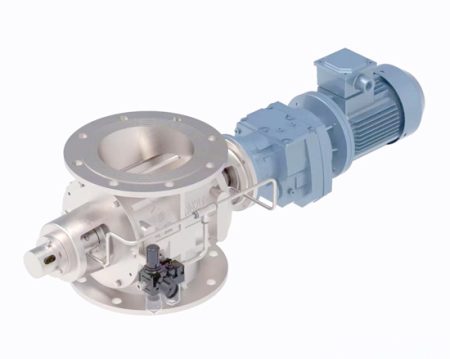
You may wonder if a rotary valve works for bulk materials. Many places get better reliability and save money with the right valve. Picking the right valve can mean fewer problems and smoother flow. The chart below shows how choosing a valve affects how well and how reliably the system works.
A rotary valve gives good control, but you should also think about other choices like an electric ball valve, pneumatic ball valve, or pneumatic control valve for your needs.
Rotary Valve Overview
What Is a Rotary Valve
A rotary valve helps move bulk materials in a system. It sits between two parts of equipment. You use it to control powders, granules, or solids. Inside, there is a spinning rotor. The rotor has pockets that hold and release material. This lets the material move at a steady speed. The valve keeps your system working well. It also stops leaks and keeps things clean. Many businesses use rotary valves. These include food, chemical, and cement companies. They use them to handle materials safely and efficiently.
Tip: Rotary valves keep different system parts apart. This lets you move materials without mixing air or dust.
When you pick a rotary valve, you get many benefits:
- You can control how much material moves.
- The valve seals tightly to keep pressure steady.
- It stops leaks and keeps things clean.
- It feeds and measures material evenly.
- It saves energy by stopping clogs and damage.
- It acts as an airlock to block air from going back.
- It works with many types of solids.
- It is easy to take care of and use with machines.
How Rotary Valves Work
A rotary valve works by turning its rotor inside. The rotor has pockets or chambers. As it spins, each pocket fills with material. The material moves to the outlet and drops out. You can change the rotor speed to control flow. This helps you get the right amount of material. The valve also acts as an airlock. It keeps air from moving backward in the system. This keeps pressure steady and stops dust.
Types of Rotary Valves
Rotary valves come in different styles. Each one is made for a special job.
Drop-Through
Drop-through rotary valves have straight up-and-down ports. You use them for dry, free-flowing things like sand or rice. The material falls through the rotor pockets. This type is best for simple systems that use gravity.
Blow-Through
Blow-through rotary valves connect to air lines. You use them for sticky things like flour or milk powder. Air blows through the valve and pushes the material out. This helps move materials that might stick or clog.
Specialized
Specialized rotary valves have special shapes or parts. You use them for materials that jam, like sunflower seeds. The offset design fills pockets only partway. This helps stop jams. Some valves have special seals for food or dust. You choose the right valve for your material and system.
| Rotary Valve Type | Design Features | Best For | Key Differences |
|---|---|---|---|
| Drop-Through | Vertical ports, free-fall pockets | Dry, free-flowing solids | Simple gravity feed |
| Blow-Through | Air-assisted discharge, pneumatic line | Sticky, cohesive powders | Air moves material |
| Specialized | Offset ports, partial fill | Jamming-prone materials | Prevents blockages |
You can find rotary valves with different rotors, housings, and drives. Each choice helps you match the valve to your needs.
Bulk Materials Handling Applications
Industry Uses
Rotary valves are used in many places. They help move bulk solids safely. You can use them to control powders, grains, and pellets. Food factories, chemical plants, and power stations use them a lot.
Here is a chart that shows which industries use rotary valves the most:
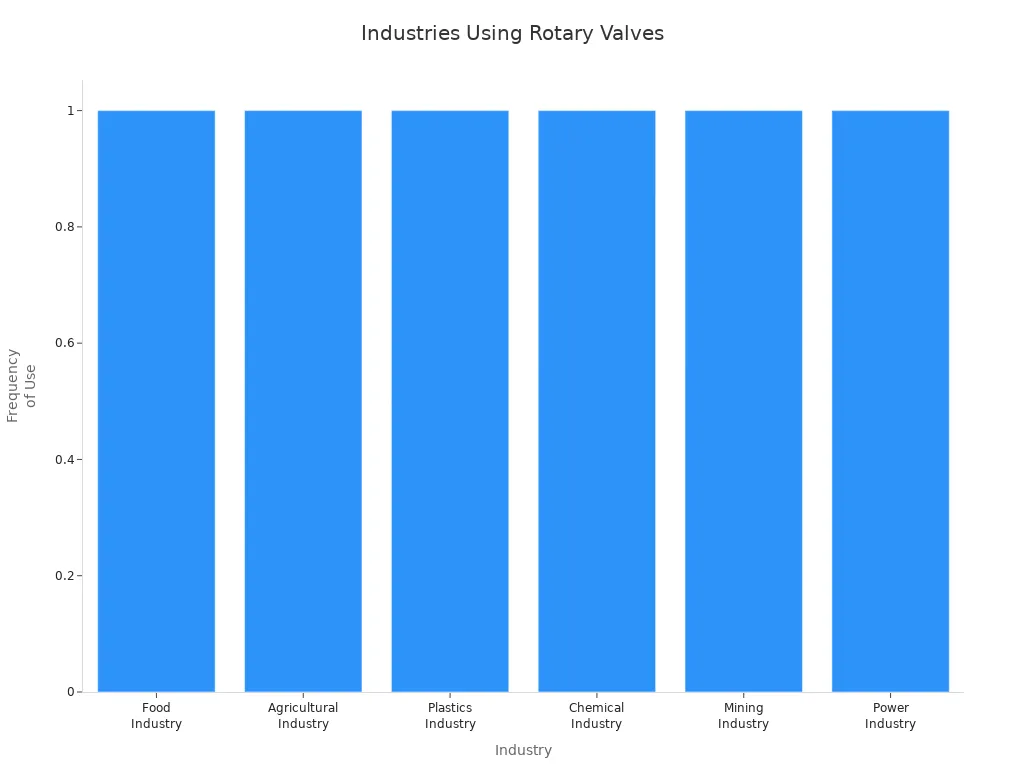
You can find rotary valves in these industries:
| Industry | Typical Applications and Uses | Materials Handled (Examples) |
|---|---|---|
| Food Industry | Controlling flow from silos, batching, mixing, pneumatic conveying | Sugar, salt, spices, wheat, rice, coffee powder, milk powder |
| Agricultural Industry | Handling grains, feeding and discharging bulk solids | Wheat, bran, broad beans |
| Plastics Industry | Feeding and discharging pellets, rubber powder | Plastic pellets, rubber powder |
| Chemical Industry | Handling powders, feeding pneumatic systems | Sodium sulphate, alumina, calcium carbonate |
| Mining Industry | Discharging minerals, handling abrasive materials | Limestone, copper oxide, cement, fly ash |
| Power Industry | Dust discharge from cyclones and collectors | Fly ash, cement |
Tip: Rotary valves help keep the flow steady and stop spills in these places.
Material Types
You need to know which materials work best with rotary valves. These valves are good for free-flowing, fine powders. You can use them for things like flour, sugar, salt, and plastic pellets. These materials move easily through the valve.
If you use rotary valves for big or rough pieces, you might get jams. Sticky or chunky materials can block the rotor. For those, you should use other feeders, like slide gates. How well the material flows, its size, and how wet it is all matter. Fine powders that flow well are best. You can test flow using Jenike’s flow function or Carr’s index.
Note: If your material is sticky or shaped oddly, you may need a different feeder to stop jams.
System Integration
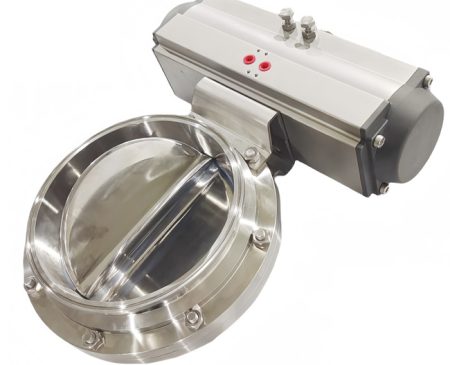
You can connect rotary valves to many other parts in your system. They work with feeders, conveyors, hoppers, and pneumatic lines. You can change the rotor speed to control how much material moves. Bigger valves move more, and slower speeds help them last longer.
Rotary valves are often placed at important spots, like the start of a pressure system or the end of a vacuum line. They help keep air and material apart. You can adjust the valve to fit your system. Good design means putting rotary valves with spool pieces and mass flow silos. This helps stop problems like bridging or ratholing.
You should watch the flow and change the valve speed to keep things working well. When you plan your system, think about the valve size, the material type, and where you need to control flow. Rotary valves help keep your process steady and cut down on downtime.
Tip: If you connect rotary valves carefully with other equipment, your system will work better and last longer.
Advantages of Rotary Valves
Precise Flow Control
A rotary valve helps you control how much material moves. You can change the rotor speed with special drives. This lets you pick the exact amount to move. Many places like food and cement plants use this. Rotary valves work for both weight and volume feeding. The design helps you control what leaves a hopper or silo. You can change the speed or setup to fit your needs. Some models have bigger rotors and large openings. These help feed materials that do not flow easily. You get steady and smooth operation. This keeps your process running well.
Tip: Rotary valves help you measure or batch feed materials. This gives you steady and even results.
Pressure and Vacuum Operation
A rotary valve helps keep pressure and vacuum in your system. It acts as an airlock between different pressure areas. The rotor pockets move material at a set speed. This keeps the feed steady for your system. The valve stops material from moving backward. You get better efficiency and less wear on your machines. Rotary valves add dry materials into pressure lines. They also keep high-pressure air below the valve. Rotors with many vanes move product all the time and stop leaks. Slow speeds help the airlock work better. Seals and bearings stop air from leaking and keep things tight.
| Feature/Aspect | Description |
|---|---|
| Pressure Differential Handling | Handles pressure differences up to 29 psig and vacuum systems |
| Rotor Design | Multiple vanes seal at all times to minimize air leakage |
| Sealing Mechanisms | Uses lip seals, labyrinth seals, and packing to reduce leakage |
| Construction | Heavy-duty cast iron for stability |
| Operation | Smooth, slow speeds maintain airlock condition |
| Additional Features | Air purge ports, lubrication ports, and durable gear motors |
You can pick different rotary valve designs to help flow and stop jams. Careful machining makes sure parts fit tightly. This helps stop air from leaking.
Airlock Efficiency
A rotary valve stops material leaks and keeps pressure steady. The valve seals air between the inlet and outlet. This keeps pressure from dropping. A small gap between the rotor and housing is important. If the gap is too big, you get leaks and dust. Keeping gaps under 0.0079 inches meets safety rules and stops leaks. The valve controls leaks by managing pressure, pocket size, and shaft speed. Worn seals can cause more leaks and pressure loss. Checking seals often helps keep things working well.
- Small gaps between vanes and housing stop pressure loss.
- Airlocks at system edges help keep pressure just right.
- The rotary valve works like a spinning door, controlling flow and pressure.
- Careful machining and small gaps stop air from leaking.
- The valve can handle pressure up to 15 psi, good for pneumatic systems.
- Good seals made from soft materials stop contamination and keep air in.
Note: Well-made rotary valves stop air leaks and help your equipment last longer. This saves money on repairs over time.
Versatility
You can use a rotary valve in many systems. This equipment works with lots of materials. It handles powders, grains, pellets, and some sticky stuff. Rotary valves are found in food plants and chemical factories. They are also used in cement processing. Each place uses them for different jobs. The main goal is to move and control bulk materials safely.
A rotary valve fits into many setups. You can use it with gravity-fed hoppers. It also works with pneumatic conveying lines. It can be used in dust collection systems too. Some models handle high heat or rough materials. Others are gentle for fragile products.
Tip: There are many sizes and designs to pick from. This helps you find the right rotary valve for your needs.
Here are some ways to use a rotary valve:
- Feed powders into a mixer
- Control grain flow from a silo
- Move plastic pellets in a factory
- Stop dust from escaping in a collection system
A rotary valve gives you many ways to handle bulk materials.
Durability
A rotary valve lasts a long time if you pick the right one. These valves are made from strong materials. They use cast iron, stainless steel, or special alloys. These materials help the valve resist damage from rough products.
You can use a rotary valve in tough places. Some models have hard surfaces or special coatings. These features protect the valve from harm. If you handle sand, cement, or minerals, you need a strong valve.
The design helps the valve last longer. The rotor and housing fit together tightly. This stops leaks and keeps the valve working well. Good seals and bearings help the valve last. You can use a rotary valve for years with simple care.
| Feature | Benefit |
|---|---|
| Strong materials | Resists wear and damage |
| Tight construction | Reduces leaks and breakdowns |
| Special coatings | Handles tough materials |
| Quality seals/bearings | Extends service life |
Note: If you choose the right rotary valve, it will work hard and last a long time.
Low Maintenance
You do not need to spend much time on a rotary valve. Most models have simple designs with few parts. This makes them easy to check and clean. You only need to grease the bearings and check the seals sometimes.
A rotary valve does not clog easily with the right materials. Some models open without tools, so cleaning is fast. If you handle food or chemicals, you can get valves that meet hygiene rules.
Here are some reasons why a rotary valve is easy to care for:
- Simple design with few parts
- Easy to clean and check
- Long-lasting seals and bearings
- Less downtime for repairs
Tip: Regular checks help your rotary valve last longer and work better.
A rotary valve saves you time and effort on maintenance. This helps your whole system run smoothly.
Energy Savings
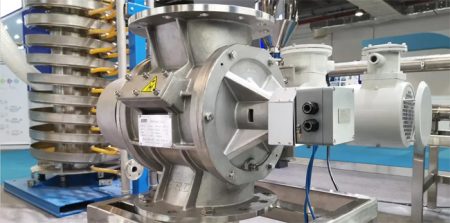
You want your bulk material handling system to use less energy. A rotary valve helps you reach this goal. When you use a rotary valve, you control the flow of materials with less effort. The valve moves only the amount you need. This means your motors and blowers do not work harder than they should.
A rotary valve acts as an airlock. It keeps air from leaking between different parts of your system. When you stop air leaks, you keep the pressure steady. Your system does not waste energy trying to keep up with lost air. This helps you save money on power bills.
Tip: If you use a rotary valve with the right speed and size, you can lower your energy use even more.
Here are some ways a rotary valve helps you save energy:
- You reduce the need for extra air in pneumatic systems.
- You keep motors from running too fast or too long.
- You stop material jams, so machines do not waste power clearing blockages.
- You keep pressure steady, so blowers and compressors work less.
| Energy Saving Feature | How It Helps You Save Power |
|---|---|
| Airlock function | Stops air leaks and keeps pressure stable |
| Precise flow control | Reduces overfeeding and wasted movement |
| Smooth operation | Lowers start-stop cycles for motors |
| Less downtime | Machines run only when needed |
You can see the difference in your energy bills over time. When you pick the right rotary valve for your system, you help the environment and your budget. Many factories choose rotary valves because they want to use less energy and keep their systems running smoothly.
Disadvantages of Rotary Valves
Jamming Risk
Rotary valves can jam in bulk material systems. Jams happen more with heavy or rough materials. These materials get stuck between the rotor vanes and the housing. The rotary valve keeps spinning even if no material is there. This makes the parts wear out faster. When parts wear out, gaps get bigger. Bigger gaps make jams happen more often.
Jamming causes many problems:
- You have to stop your system to fix it.
- Cleaning and repairs take a long time.
- You might need to fix or change parts often.
- Your costs go up because of wasted power and downtime.
Tip: Using other designs like trickle valves can help stop jams. This keeps your system working longer.
Checking your rotary valve often helps you find problems early. Keeping a maintenance log helps you know when to fix or change parts before a jam stops your work.
Lubrication Needs
Rotary valves need the right lubricant to work well. If you use the wrong lubricant, the bearings can get damaged. Damaged bearings can stop your machine and slow down production. If the valve gets too hot, the parts can change shape. This hurts how your system works.
You should think about these things for lubrication:
- Viscosity: Pick a lubricant that matches speed and temperature.
- Type: Use grease for sealing or oil for better heat control.
- Application: Oil mist gives steady lubrication; grease is good for slow or on-off use.
- Quantity: Too much lubricant makes heat and slows things down. Too little makes metal parts rub together.
If you do not lubricate your rotary valve right, you will see more wear and breakdowns. The valve will not last as long. You may need to fix parts because they do not work well. Good lubrication helps your equipment last longer and work better.
Noise
Rotary valves can be noisy when they run. Moving parts and flowing material make vibrations and sound. Loud noise can make your workspace uncomfortable and unsafe. Some rotary valves use special features to lower noise. Q-Trim technology can cut noise by up to 30 decibels. These features use pressure staging and flow division to lower noise and vibration.
| Rotary Valve Feature | Impact on Noise Level |
|---|---|
| Standard Design | More noise and vibration |
| Q-Trim Technology | Less noise, safer workspace |
Note: Picking a rotary valve with noise control helps protect your team and equipment from loud sounds.
Controlling noise is important for safety and meeting rules. Always think about noise levels when you choose equipment for bulk material handling.
Temperature Limits
You need to know that a rotary valve has limits when it comes to temperature. Most rotary valves work best at normal room temperatures. If you use them with very hot or very cold materials, problems can happen. High heat can make the metal parts expand. This can cause the rotor to rub against the housing. If this happens, the valve can jam or wear out faster. Cold temperatures can make seals hard and brittle. When seals break, air and material can leak out.
Some rotary valves use special materials to handle higher temperatures. Stainless steel and special seals help in these cases. You should always check the temperature rating before you pick a rotary valve for your system.
Tip: If you need to handle very hot or cold materials, ask the supplier for a rotary valve made for those conditions.
Initial Cost
You might notice that a rotary valve costs more at the start than some other feeders. The price depends on the size, material, and special features. Stainless steel models cost more than cast iron ones. If you need special seals or coatings, the price goes up. You also pay more for valves that handle high pressure or tough materials.
Here are some things that affect the cost:
- Size of the valve
- Type of metal or coating
- Special seals or bearings
- Custom designs for your system
Even though the first cost is higher, a rotary valve can save you money over time. It lasts longer and needs less repair if you choose the right one. You should think about both the starting price and the long-term savings.
| Factor | How It Affects Cost |
|---|---|
| Valve size | Bigger valves cost more |
| Material | Stainless steel is pricier |
| Special features | Add to the total price |
| Custom design | Raises the cost |
Wear and Tear
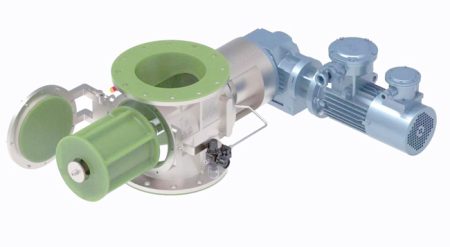
A rotary valve faces wear and tear during use. The rotor and housing touch each other as they move. Hard or rough materials can scratch or grind the inside parts. Over time, this makes the gaps bigger. When gaps get too big, the valve leaks air and material. You may also see more dust in your system.
You can slow down wear by picking the right materials. Hard coatings and strong metals help the valve last longer. You should check the valve often for signs of damage. If you see worn parts, replace them before they cause leaks or jams.
Note: Regular checks and good cleaning help your rotary valve work better and last longer.
Material Leakage
You may notice that material leakage is a common problem with rotary valves. When you use a rotary valve, you want to keep all your product inside the system. If material leaks out, you lose product and money. Leaks can also make your work area dirty and unsafe.
Material leakage happens for several reasons. The most common cause is wear between the rotor and the housing. As the rotary valve runs, the gap between these parts can get bigger. Fine powders and dust can escape through these gaps. If you handle very light or dusty materials, you may see more leaks.
Here are some reasons why material leakage can occur:
- Worn seals or gaskets
- Large gaps between the rotor and housing
- High system pressure that pushes material out
- Poor maintenance or cleaning
Tip: You can reduce leaks by checking seals often and replacing worn parts quickly.
Material leakage can lead to other problems. You may see dust in the air, which can be a health risk. Leaks can also cause pressure loss in your system. If you lose pressure, your equipment may not work as well. You might need to stop your system to clean up spills or fix leaks.
You can use special seals or tighter clearances to help stop leaks. Some rotary valves use air purge systems to keep dust inside. You should always choose the right valve for your material and check it often.
| Problem Caused by Leakage | Impact on Your System |
|---|---|
| Product loss | Wastes material and money |
| Dust in the air | Health and safety risk |
| Pressure loss | Reduces system efficiency |
| More cleaning needed | Increases downtime and labor |
If you want your system to run well, you must watch for leaks and fix them fast. Good maintenance and the right rotary valve design help you keep your product where it belongs.
Application Considerations
Material Compatibility
You must pick rotary valve materials that fit your process. This helps your system last longer and not break early. If you choose the wrong materials, you might get leaks or broken parts. Sometimes, the valve can even rust or corrode. Always check what is in your bulk material and how it acts.
- Picking the right materials helps the valve last and work well.
- Stainless steel or special alloys are good for tough or corrosive jobs. These choices make the valve stronger and need fewer repairs.
- The valve body and trim should match your process and what you move. This stops the valve from breaking too soon.
- Manufacturer rules and standards like ISO or ANSI help you choose the best valve.
- Gaskets also need to fit your process, especially for flanged connections.
- Things like heat, wet air, or harsh chemicals need special care. These can cause leaks or rust if you do not pick the right materials.
- Checking your valve often and installing it right helps it work better and last longer.
When you use the right materials, you lower problems and trust your system more. Certified valves with good materials also help you follow safety rules in food or medicine plants.
System Design
You need to plan your system with the rotary valve in mind. Start by looking at your material’s size, weight, and how it moves. Pick valve features that match what you need. If your material is rough or sticky, use a valve with the right coating or space.
Valve size matters a lot. If it is too small, it can jam. If it is too big, you waste energy. The drive and speed should match your flow needs. Adjustable drives help you set the right speed. Work with experts to get the best valve for your job.
Look at how the valve is built. Small gaps between the rotor and housing, about 0.004 to 0.006 inches, help stop leaks. Strong bodies and end covers keep the valve safe under pressure. The rotor should have a thick shaft and many vanes to move material well. Slow turning, about 22 rpm or less, helps seal and protect the valve.
In dust or air systems, the rotor’s shape and number of vanes matter. Use hard steel for rough dust or stainless steel for clean jobs. Always pick the right size to stop jams and save energy. Safety is important too. In places with explosive dust, use valves that meet NFPA rules.
Maintenance Planning
You can keep your rotary valve working well with a good plan. This helps you stop breakdowns and keeps your system safe.
- Check your valve every month. Look for damage, leaks, or worn parts. Early checks help you fix problems before they get worse.
- Test and adjust your valve as the maker says. Do this every few months or once a year. Use the right tools and keep notes to see changes.
- Oil moving parts and change seals when needed. Use the right oil for your system. This keeps the valve running smoothly.
- Watch for trouble signs. Listen for strange sounds, check for heat, and feel for shaking. These signs can warn you before a breakdown.
- Use sensors and digital tools to watch valve health. These tools help you plan repairs when your system is not running.
- Keep spare parts ready. Know where to get new parts fast. This helps you fix things quickly.
- Use digital systems to track cleaning and repairs. These systems help you plan work, order parts, and keep your system running with less downtime.
A good maintenance plan saves you time and money. It also helps your rotary valve last longer and work better.
Cost Analysis
When you choose a rotary valve for bulk material handling, you need to look at more than just the price tag. You want to know how much you will spend now and in the future. Cost analysis helps you make a smart choice for your system.
Initial Costs
You pay for the rotary valve itself. The price depends on the size, material, and special features. Stainless steel valves cost more than cast iron. If you need special seals or coatings, the price goes up. Custom designs also add to the cost.
| Cost Factor | Impact on Price |
|---|---|
| Valve Size | Bigger valves cost more |
| Material Type | Stainless steel is higher |
| Special Features | Add to total cost |
| Custom Design | Raises the price |
Installation Costs
You need to pay for installation. This includes labor and any changes to your system. If your system needs special fittings or supports, you will pay more. Sometimes, you need to train your team to use the new valve.
Operating and Maintenance Costs
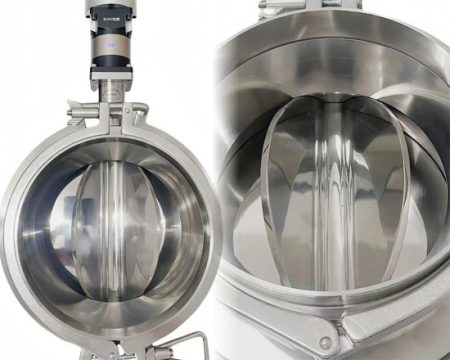
You will spend money to keep the valve running. You need to check seals, grease bearings, and replace worn parts. Some rotary valves need less care than others. If you pick a strong valve, you will spend less on repairs.
- Regular checks help you avoid big repair bills.
- Good lubrication keeps the valve working longer.
- Spare parts cost money, but they help you fix problems fast.
Energy Costs
Rotary valves can help you save energy. They stop air leaks and keep pressure steady. When your system uses less power, you save money on energy bills.
Tip: Pick the right size and speed for your valve. This helps you use less energy and save more money.
Long-Term Value
You want a valve that lasts. A strong rotary valve may cost more at first, but it saves you money over time. You spend less on repairs and downtime. You also lose less product from leaks.
Key Points to Remember:
- Look at all costs, not just the price tag.
- Think about how long the valve will last.
- Plan for maintenance and spare parts.
- Saving energy can lower your total costs.
A good cost analysis helps you pick the best rotary valve for your needs. You get a system that works well and saves you money in the long run.
Performance and Reliability
Flow Properties
You need to know how flow affects your system. Rotary valves need certain torque to work right. There are three main torque types. Break torque starts the valve moving. Running torque keeps it turning. Seating torque closes the valve all the way. If the actuator’s torque is too low, the valve may not move well. This can make your process stop working.
Here are some flow property facts you should know:
- Break torque is the force to start the valve.
- Running torque is the force to keep it moving.
- Seating torque is the force to close it tight.
- The actuator must give more torque than the valve needs.
- If the actuator is too small, the valve may not work.
- If it is too big, you waste energy and money.
- The material type and process change the torque needed.
- Different actuators give different torque amounts.
- Always check that the actuator and valve match.
- Add extra torque for safety in your process.
Tip: Pick an actuator with extra torque so your rotary valve works well.
Operating Conditions
Your rotary valve must work in many conditions. Temperature changes can make metal parts bigger or smaller. High heat can make the rotor stick. Cold can cause leaks. Pressure changes between storage and pipes affect how well the valve seals. Too much pressure can cause leaks and lower efficiency.
Humidity matters too. Lots of moisture can hurt sensors and moving parts. Use parts with high protection, like IP67, to keep water out. Regular checks and good seals help your valve last longer in wet places.
Note: Always match your valve’s design to the temperature, pressure, and humidity in your system.
Sizing and Selection
Picking the right rotary valve size is important for good results. You need to look at the material type, bulk density, and how fast you want to move it. Most valves work best when filled to about 70% of their pocket size. If you use very dense or sticky materials, you may need a different fill rate.
Here are some key points for sizing and selection:
- Check the lowest bulk density of your material.
- Figure out the flow rate in pounds per minute.
- Use the right valve efficiency, usually 70% for most materials.
- Set the rotor speed and pick the right valve size.
- Think about the shape of the rotor pockets. U-shaped pockets help stop blockages.
- For rough materials, a bigger valve can reduce wear.
- Make sure the valve fits your system’s pressure and temperature needs.
- Ask experts for help if your system has special needs.
A good fit means fewer problems and better reliability. You will see less wear, fewer leaks, and a longer-lasting system.
Installation
You need to install a rotary valve with care to get the best results in your bulk material handling system. Good installation helps you avoid leaks, jams, and early wear. You should follow a step-by-step process to make sure everything fits and works well.
Step-by-Step Installation Guide:
- Check the Site:
Look at the area where you want to place the rotary valve. Make sure the space is clean and free from dust or debris. You need enough room for the valve and for future maintenance. - Prepare the Equipment:
Inspect the rotary valve before you install it. Check for damage or missing parts. Clean the valve and all connection points. You want a smooth surface for a tight seal. - Align the Valve:
Place the rotary valve in the correct position. The inlet and outlet must line up with your system. Use a level to make sure the valve sits straight. Misalignment can cause leaks or jams. - Secure the Valve:
Bolt the rotary valve to the mounting plate or support frame. Tighten the bolts evenly. Do not over-tighten, as this can damage the housing. Use washers to spread the load and prevent cracks. - Connect the System:
Attach the inlet and outlet pipes or hoppers. Use gaskets to seal the joints. Make sure all connections are tight to stop air and material leaks. - Install the Drive:
Connect the motor or actuator to the rotary valve shaft. Check that the drive matches the valve’s speed and torque needs. Align the couplings to avoid vibration. - Test for Leaks:
Run a quick test with air or a small amount of material. Look for leaks at the seals and joints. If you find a leak, tighten the bolts or replace the gasket. - Set Up Safety Features:
Add guards around moving parts. Install sensors or switches to monitor valve position and speed. Safety features help protect you and your equipment.
Tip: Always follow the manufacturer’s instructions for installation. This helps you avoid mistakes and keeps your warranty valid.
Common Installation Mistakes and How to Avoid Them:

| Mistake | How to Avoid It |
|---|---|
| Misalignment | Use a level and check often |
| Loose bolts | Tighten bolts evenly |
| Poor sealing | Use quality gaskets |
| Wrong drive setup | Match motor to valve specs |
| Skipping safety steps | Install guards and sensors |
You should keep a record of your installation steps. This helps you track changes and plan future maintenance. If you install the rotary valve correctly, you will see better flow, less downtime, and longer equipment life.
Real-World Examples
Food Industry
Rotary valves are used in many food factories. They help move powders and grains safely. You can use them to add flour to mixers. They also control how sugar leaves silos. Rotary valves keep food clean and stop dust from getting out. Food factories must follow strict hygiene rules. Stainless steel rotary valves are best because they do not rust. They are also easy to clean.
Some ways food plants use rotary valves are:
- Adding spices to packaging machines
- Putting coffee powder into grinders
- Letting rice or wheat out of storage bins
Rotary valves help keep the flow steady. This means you have fewer spills and less waste. They also protect your food from getting dirty. Many food factories use valves that open quickly. You can clean these valves fast. This helps you follow food safety rules.
Tip: Pick rotary valves with FDA-approved seals for food safety.
| Food Product | Rotary Valve Role | Benefit to You |
|---|---|---|
| Flour | Metering to mixers | Steady flow, no dust |
| Sugar | Discharge from silos | Clean, safe handling |
| Coffee powder | Feeding grinders | No spills, easy clean |
Chemical Processing
Rotary valves are found in chemical plants too. They help move powders, granules, and sticky chemicals. You can use them to add sodium carbonate to reactors. They also move calcium carbonate into air lines. Rotary valves keep chemicals inside and stop leaks. You need strong materials like stainless steel for harsh chemicals.
Rotary valves help you control how fast things move. You can change the speed to fit your process. They also protect your system from pressure changes. Many chemical plants use valves with special seals. These seals do not rust and keep chemicals inside.
Some common uses in chemical plants are:
- Adding powders to mixers
- Letting granules out of hoppers
- Metering additives into reactors
Note: Always check if the rotary valve works with your chemicals.
| Chemical Material | Rotary Valve Use | Key Benefit |
|---|---|---|
| Sodium carbonate | Metering to reactors | Accurate dosing |
| Calcium carbonate | Pneumatic conveying | Leak prevention |
| Alumina | Discharge from silos | Safe, clean handling |
Cement and Minerals
Rotary valves are used in cement plants and mines. They help move heavy and rough materials like cement, limestone, and fly ash. Rotary valves feed cement into mixers or let minerals out of silos. You need valves made from cast iron or with hard coatings. These valves last longer and do not wear out fast.
Rotary valves help keep dust under control. You have fewer spills and a cleaner work area. They also stop jams in your system. Many cement plants use big rotary valves with strong rotors. These valves handle rough materials without breaking.
Some ways rotary valves are used in cement and minerals are:
- Feeding cement into blending machines
- Letting limestone out of storage bins
- Moving fly ash in dust collection systems
Tip: Choose rotary valves with tough coatings for rough materials.
| Material | Rotary Valve Function | Benefit to You |
|---|---|---|
| Cement | Feeding mixers | Less dust, steady flow |
| Limestone | Discharge from silos | Long-lasting valve |
| Fly ash | Dust collection | Clean, safe operation |
Rotary valves give you control and safety in hard jobs. You keep your process smooth and protect your equipment from harm.
Plastics
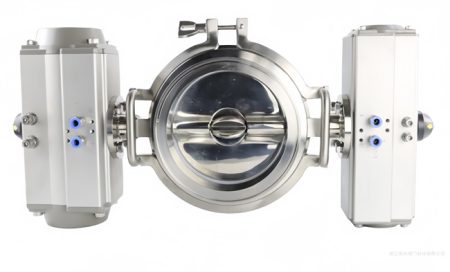
You see rotary valves in lots of plastics factories. These valves move plastic pellets, powders, and regrind safely. They help you handle big amounts of raw materials. Rotary valves let you control how much material moves each time.
In plastics factories, rotary valves do many jobs.
- They feed plastic pellets into extruders or molding machines.
- They let regrind out from grinders or shredders.
- They measure out powders like PVC or additives for mixers.
- They move materials through pneumatic conveying lines.
Tip: Rotary valves keep your process steady. You can stop machines from getting too much or too little material.
You can pick rotary valves made from stainless steel or special alloys. These materials do not wear out fast from hard pellets. Some valves have coatings to stop sticky powders from sticking inside. Some models are easy to clean. This helps you change colors or types without mixing them.
Here is a table that shows how rotary valves help in plastics plants:
| Application | Rotary Valve Role | Benefit to You |
|---|---|---|
| Feeding extruders | Metering pellets | Steady flow, less waste |
| Pneumatic conveying | Airlock and flow control | No leaks, clean system |
| Mixing additives | Precise dosing | Accurate recipes |
| Handling regrind | Discharge from grinders | No jams, easy flow |
You can change the speed of your rotary valve. This lets you match how fast your line runs. If you need more material, you make the valve go faster. If you need less, you slow it down. This helps you keep control of your process.
Note: Always check if your rotary valve works with your plastic’s size and shape. Some pellets or powders need special rotors.
Rotary valves also help keep your plant clean. They stop dust and pellets from leaking out. This means you clean less and your work area is safer. You can also follow safety rules more easily.
When you use rotary valves in plastics, you get steady work, less waste, and better products. You can trust these valves to keep your materials moving right.
Rotary valves give you strong control, durability, and energy savings. You may face issues like jamming, noise, or leaks. To choose the right valve, look at your material, system needs, and long-term plans.
- List your main goals.
- Check your material’s flow and size.
- Think about your budget and maintenance.
Tip: Talk with an expert or review your system before you decide. The right choice helps your process run smoothly.
FAQ
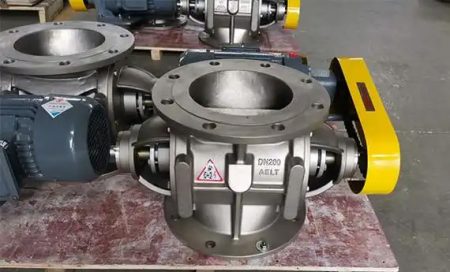
What materials work best with rotary valves?
You get the best results with free-flowing powders and small granules. Materials like flour, sugar, salt, and plastic pellets move smoothly. Sticky or large pieces may cause jams or leaks. Always test your material before choosing a valve.
How often should you maintain a rotary valve?
You should check your rotary valve every month. Clean it and look for worn parts. Lubricate bearings as needed. Regular checks help you spot problems early and keep your system running smoothly.
Can rotary valves handle abrasive materials?
Yes, you can use rotary valves with abrasive materials like sand or cement. Choose valves with hard coatings or strong metals. This helps reduce wear and extends the valve’s life. Always inspect for damage if you handle rough products.
What causes rotary valves to leak material?
Leaks happen when seals wear out or gaps grow between the rotor and housing. Fine powders escape through these spaces. High pressure can also push material out. You can reduce leaks by checking seals and replacing worn parts quickly.
Are rotary valves safe for food applications?
Yes, you can use rotary valves in food plants. Pick models made from stainless steel with FDA-approved seals. These valves are easy to clean and resist rust. They help you meet hygiene rules and keep food safe.
How do you size a rotary valve for your system?
First, check your material’s bulk density and flow rate. Choose a valve that matches these needs. Most valves work best when filled to about 70%. Ask an expert if you have special requirements or need help with sizing.
Can you use rotary valves in high-temperature systems?
You can use rotary valves in hot systems if you pick the right model. Some valves use special metals and seals for high heat. Always check the temperature rating before you install the valve.
What are signs that your rotary valve needs repair?
Watch for strange noises, leaks, or slow movement. If you see dust around the valve or notice jams, check for worn parts. Quick repairs help you avoid bigger problems and keep your system safe.
